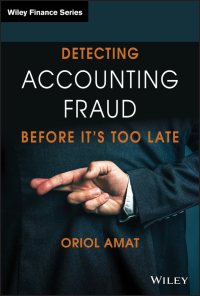PART VIII(60 points) Multiple Choice. 1. Which of the following best describes the concept of "sunk costs"? Costs that will be incurred regardless of what decision is made Costs that are the same between competing alternatives Costs that are relevant to the decision process D, Costs that have already been incurred and cannot be avoided 2. Future benefits foregone when one option is chosen over another are called: A Decision Costs 8) Opportunity Costs c, Relevant Costs D, Sunk Costs 3. Which of the following costs would be considered sunk costs? A CEO salary, not based on performance Direct Labor wages c) Yearly depreciation on factory equipment Utilities expense 4. Which of the following factors would lead a company to make a component rather than buy it even if the computations say buy? Other, more profitable uses for production equipment Concerns that the company is too highly invested in fixed assets c) Attractive deals offered by suppliers ) Greater control over production quality 5. Which of the following is not relevant to the decision of whether to drop a business segment or not? A Revenues of the segment 5) Variable costs of goods sold of the segment c) Variable operating expenses of the segment D) Fixed overhead allocated to the segment 6. Which of the following combinations of products would be considered joint products? A Chairs and tables Corn and alfalfa c) Machine oil and gasoline d) Hamburgers and hot dogs 7. Which of the following would not be included on the Selling and Administrative Expense Budget? A Factory Rent B Sales Commission c) Accounting Department salaries ) Legal Fees 8. Which budgeted financial statement is generally prepared first? A Balance Sheet B) Statement of Cash Flows ci Income Statement D, Statement of Retained Earnings 9. What can cause a difference between the Cash budget and another budget? A Sales made to customers on account e Direct materials purchased on account c) Depreciation expense D) All of the above 10. Which of the following determines the levels of all budgets? A Planned production levels B) Approved capital expenditures c) Yearly cash flows oy Forecasted sales levels 11. The difference between the budgeted amounts of Sales and Cash Received for sales is equal to the budgeted change in: A Accounts Receivable B) Accounts Payable c) Cash o Retained Earnings 12. Watkis Company received its February bank statement, which included a memo indicating that the check of Sarah Company for $652 had been returned as "NSF." Watkis' bank reconciliation should list this check as a(n): A) Addition to balance per bank statement B) Deduction from balance per bank statement Addition to balance per general ledger D) Deduction from balance per general ledger 13. When a company has cash available in another account in the same bank at which an overdraft has occurred, the company will: A) offset the overdraft against cash account. B) report the same in the notes to financial statement. C) report the bank overdraft amount as account payable. D) classify the bank overdraft as compensating balance. 14. The following journal entry is necessary upon discovery of a "NSF" check during a bank reconciliation: A) Accounts Receivable Cash B) Not Sufficient Funds Expense Cash Miscellaneous Expense Cash D) No entry is necessary because the bank makes the entry. 15. Which of the following is a poor internal accounting control feature? A) Segregation of duties. B) Combining authorization of an asset transaction with having access to the asset. C) Pre-numbered documents D) Internal auditing. 16. Over-estimating production levels will likely lead to: A) Unfavorable static budget variances B) Unfavorable flexible budget variances c) Favorable flexible budget variances Dj Favorable static budget variances 17. Which of the following is not important to know when preparing the flexible budget performance report? A) Actual production levels B) Actual per-unit costs c) Budgeted per-unit costs D) Budgeted production levels 18. Which of the following managers would be most concerned about a division's ROI? A) Cost Center Manger B) Profit Center Manager c) Human Resources Manager d) Investment Center Manager 19. For planning and cost control purposes, fixed overhead is not included in the standard cost per unit because: w It is incurred based on the number of units produced. B) The number of units produced does not vary from period to period. c) It can best be controlled on a lump-sum basis. d) It is a fixed cost for more than one item. 20. Why is the cost function (a + bx) for the flexible budget only applicable within the relevant range? A) Some costs will behave differently outside of the relevant range B) The cost levels affect the range of production levels available C) Only the static budget matters when compared with results outside of the relevant range D) None of the above










